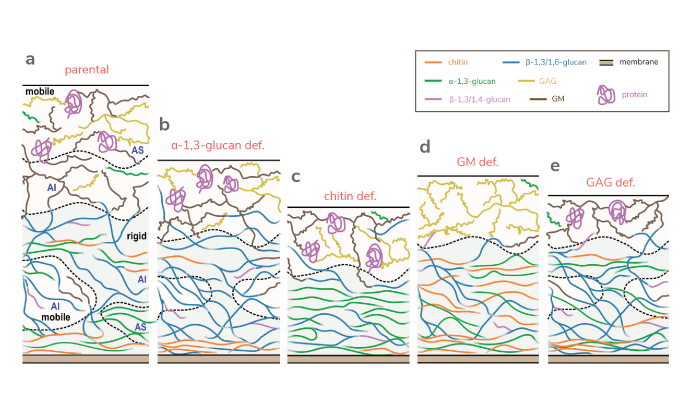
Bacteria get a lot of attention when it comes to discussing antimicrobial resistance – and, after the last couple of years, viruses really need no introduction. But it can be all too easy to overlook our eukaryotic cousins – the friendly fungi.
From bread to wine, beer to mushrooms, we humans have exploited these microbes for thousands of years. But they have a dark side; fungal infections can be life-threatening and, just like bacteria, fungi can develop resistance to the drugs we use to treat them. Given that there are only three types of antifungal medication in existence, this presents a problem.
In new research, Tuo Wang and his team from the Department of Chemistry at Louisiana State University have used NMR spectroscopy to uncover the molecular architecture of fungal cell walls and their response to stress. “The structural information we’ve gathered could provide molecular-level rationale for the development of antifungal drugs that target unique molecules in the fungal cell wall,” says Wang.
The team combined biophysical methods (solid-state NMR spectroscopy of whole cells) with biochemical approaches to examine the structural dynamics of the cell wall polysaccharides present in Aspergillus fumigatus – a pathogen that causes life-threatening disease in immunocompromised individuals.
“This toolbox is widely applicable to structural investigations of a large variety of fungal pathogens, as well as their responses to antifungal compounds, mutants, and severe environments,” adds Wang. “The approach also opens up the possibility of investigating the extracellular matrices in other organisms (such as algae, plants, and bacteria) using intact or even living cells with atomic-level resolution.”
In their paper, the team proposes a revised model of cell wall architecture including five categories of polysaccharides: chitin, β-glucan, mannan, α-glucan, and galactosaminogalactan. Their results have also revealed greater plasticity of the fungal cell wall and its ability to implement different survival strategies in the presence of antifungal drugs. Ultimately, this could help scientists design new compounds to combat invasive fungal infections.
References
- A Chakraborty et al., Nat Com, 12, 6346 (2021). DOI : 10.1038/s41467-021-26749-z




